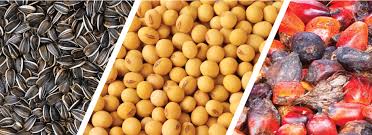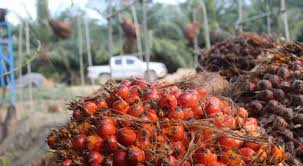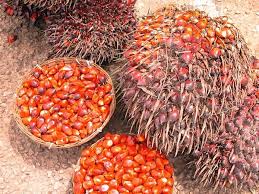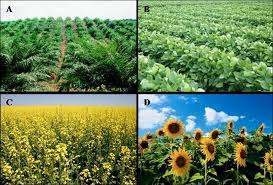Oil crops are plants cultivated primarily for the extraction of oil from their seeds, fruits, or nuts. These crops play a crucial role in global agriculture and the economy, providing not only vegetable oils for cooking and food processing but also serving as vital raw materials for industrial applications, cosmetics, and biofuels.
The oils extracted from these crops are often high in essential fatty acids and other nutrients, making them valuable components of human diets and contributing to nutritional health.
The importance of oil crops extends beyond their direct contributions to food and industry; they also have significant economic and social implications. For many countries, especially those in tropical and subtropical regions, oil crops serve as key export products, driving national economies and supporting livelihoods for millions of farmers and workers involved in their production and processing.
In regions like Southeast Asia, oil palm cultivation has transformed rural economies, while in West Africa, crops such as shea and groundnuts are essential for both local consumption and export.
Several types of oil crops are widely recognized, each with distinct characteristics and applications. Common oil crops include soybeans, canola (rapeseed), sunflower, palm oil, and peanuts. Soybeans are notable for their high protein content and versatility, making them a staple in animal feed and various food products.
Canola oil, extracted from rapeseed, is prized for its light flavor and health benefits, while sunflower oil is known for its high smoke point and nutritional value. Palm oil, derived from the fruit of the oil palm tree, is one of the most widely produced and consumed vegetable oils globally, despite concerns over environmental impacts and sustainability.
Peanuts, often considered a legume, are cultivated for their oil content and protein-rich seeds, contributing to both culinary and industrial uses.
The cultivation of oil crops also raises important discussions about sustainability, environmental impacts, and agricultural practices. While oil crops can contribute to food security and economic development, their production can also lead to deforestation, loss of biodiversity, and social conflicts, particularly in regions where land use changes disrupt local communities and ecosystems.
Consequently, there is an increasing focus on promoting sustainable practices in oil crop production, such as agroforestry, organic farming, and certifications like the Roundtable on Sustainable Palm Oil (RSPO), which aim to balance economic benefits with environmental stewardship.
Types of Oil Crops

Oil crops are cultivated primarily for their seeds, which contain high levels of oil. Here are the main types:
1. Soybeans: A major source of vegetable oil, soybeans are widely grown and are rich in protein as well as oil, making them popular in both food products and animal feed.
2. Sunflower: Sunflower seeds produce sunflower oil, known for its light flavor and high smoke point. It is often used in cooking and frying.
3. Rapeseed (Canola): Canola oil, derived from rapeseed, is low in saturated fat and high in omega-3 fatty acids. It’s widely used in cooking and food processing.
4. Palm: Palm oil is extracted from the fruit of the oil palm tree. It is used in various food products, cosmetics, and biofuels.
5. Groundnuts (Peanuts): Peanut oil is extracted from peanuts and is commonly used for frying and in salad dressings. It has a distinct flavor and is rich in monounsaturated fats.
6. Sesame: Sesame seeds yield sesame oil, which is prized for its flavor and health benefits. It is commonly used in Asian cuisine and as a cooking oil.
7. Flaxseed: Flaxseed oil is rich in omega-3 fatty acids and is often used as a dietary supplement and in cooking.
8. Olives: Olive oil, extracted from olives, is renowned for its health benefits and is a staple in Mediterranean diets.
9. Coconut: Coconut oil is derived from the meat of coconuts. It is popular in cooking and baking and is also used in cosmetics.
10. Hemp: Hemp seeds produce hemp oil, which is used for cooking, as a dietary supplement, and in body care products.
Nutritional Benefits of Oil Crops
Oil crops provide various nutritional benefits, making them valuable for diets and health. Here are some key points:
1. Healthy Fats: Most oil crops are rich in unsaturated fats, including monounsaturated and polyunsaturated fats, which are beneficial for heart health.
2. Vitamins: Many oils are good sources of fat-soluble vitamins such as vitamin E (antioxidant) and vitamin K (important for blood clotting).
3. Omega Fatty Acids: Certain oil crops, like flaxseed and canola, are high in omega-3 and omega-6 fatty acids, which play a critical role in brain function and cell growth.
4. Plant Compounds: Oils derived from seeds often contain phytochemicals that may have health-promoting properties, including antioxidants that can reduce inflammation.
5. Protein Content: Oil crops like soybeans provide significant amounts of protein, making them a valuable component of vegetarian and vegan diets.
6. Dietary Fiber: While oil extraction reduces fiber content, the remaining meal (like soybean meal) is high in fiber, aiding digestive health.
7. Low Saturated Fats: Many oils, such as olive and canola, have low levels of saturated fats, which are linked to lower cholesterol levels and reduced risk of heart disease.
Read Also: 16 Medicinal Health Benefits Of Impatiens pallida (Pale Touch-Me-Not)
Economic Importance of Oil Crops

Oil crops play a significant role in the economy for several reasons:
1. Global Trade: Oil crops like palm and soybeans are major commodities in international trade, contributing significantly to the economies of producing countries.
2. Job Creation: The cultivation, processing, and distribution of oil crops provide employment opportunities in agriculture, manufacturing, and logistics.
3. Value-Added Products: Beyond cooking oils, oil crops are used to produce various products, including biodiesel, cosmetics, and food ingredients, increasing their economic value.
4. Diverse Markets: The versatility of oil crops means they can be marketed for food, industrial, and health products, diversifying income sources for farmers.
5. Investment Opportunities: Oil crop production often attracts investment in agricultural technologies, infrastructure, and sustainable farming practices.
6. Food Security: Oil crops contribute to food security by providing essential nutrients and fats in human diets, supporting public health.
7. Rural Development: Cultivating oil crops can help boost rural economies by supporting local markets and providing livelihoods to smallholder farmers.
Geographic Distribution of Oil Crops
The cultivation of oil crops is spread across various regions of the world, influenced by climate, soil type, and agricultural practices:
1. Soybeans: Predominantly grown in the United States, Brazil, and Argentina. These regions have the right climate and fertile soil for high-yield soybean farming.
2. Sunflower: Mainly cultivated in countries like Ukraine, Russia, and Argentina, where the climate is suitable for sunflower production.
3. Rapeseed (Canola): Grown primarily in Canada, China, and the European Union. Canada is the largest exporter of canola oil globally.
4. Palm: Majorly produced in Indonesia and Malaysia, where the tropical climate is ideal for oil palm cultivation.
5. Groundnuts (Peanuts): Commonly grown in China, India, and the United States. The warmer climate and well-drained soil are favorable for peanuts.
6. Sesame: Mainly produced in countries like Myanmar, India, and Sudan, where the growing conditions align with sesame’s needs.
7. Flaxseed: Grown primarily in Canada, China, and Russia, with the right climatic conditions for optimal growth.
8. Olives: Predominantly cultivated in Mediterranean countries such as Spain, Italy, and Greece, where the climate is conducive to olive production.
9. Coconut: Grown in tropical regions, particularly in countries like Indonesia, the Philippines, and India, which provide ideal conditions for coconut palms.
10. Hemp: Increasingly grown in North America and Europe due to the rising demand for hemp-derived products, benefiting from varied climates.
Cultivation Practices for Oil Crops
Cultivating oil crops requires specific practices to ensure healthy growth and optimal yield. Here are essential practices for successful cultivation:
1. Soil Preparation: Before planting, prepare the soil by tilling to a suitable depth and incorporating organic matter or fertilizers to improve soil fertility and structure.
2. Choosing the Right Variety: Select oil crop varieties that are well-adapted to local climatic conditions and soil types, as this can significantly influence yield.
3. Planting: Follow recommended planting dates and spacing. For most oil crops, planting should occur at the onset of the rainy season to ensure adequate moisture.
4. Irrigation Management: Implement an irrigation system if rainfall is insufficient. Drip or sprinkler irrigation can help maintain consistent moisture levels, crucial for oil crop development.
5. Weed Control: Regularly monitor for weeds and employ integrated weed management practices, including mulching and herbicide application, to reduce competition for nutrients and water.
6. Pest and Disease Management: Implement a pest and disease control program. This includes scouting fields, using resistant varieties, and applying biological or chemical controls as needed.
7. Fertilization: Conduct soil tests to determine nutrient needs. Apply fertilizers based on test results and crop requirements, focusing on macronutrients like nitrogen, phosphorus, and potassium.
8. Crop Rotation: Rotate oil crops with legumes or other crops to improve soil health and reduce pest and disease pressure.
9. Harvesting Management: Monitor crop maturity closely and harvest at the appropriate time to maximize oil content and quality.
Harvesting Techniques for Oil Crops
Proper harvesting techniques are crucial for maximizing the yield and quality of oil crops. Here are key harvesting practices:
1. Timing: Harvest oil crops when they reach physiological maturity, which varies by crop. For example, soybeans are harvested when leaves yellow and pods turn brown, while sunflower heads should be harvested when the back turns yellow.
2. Manual vs. Mechanical Harvesting: Depending on the scale of production, choose between manual harvesting (often used for small-scale farmers) or mechanical harvesting (for larger operations). Mechanical harvesters can significantly reduce labor costs and increase efficiency.
3. Cutting Techniques: For crops like sunflower, cut the heads off at a specific height to avoid loss of seeds. For soybeans, ensure the plants are cut close to the ground to maximize yield.
4. Drying: After harvesting, dry the seeds to reduce moisture content, preventing spoilage and improving oil extraction efficiency. This is especially important for crops like soybeans.
5. Post-Harvest Handling: Handle harvested crops carefully to avoid bruising or damage, which can affect oil quality. Store harvested crops in a cool, dry place until processing.
Read Also: 12 Medicinal Health Benefits Of Lomatium (Biscuit Root)
Processing Methods for Oil Crops

Processing oil crops is essential for extracting oil and preparing the final product for market. Here are common processing methods:
1. Cleaning: Remove impurities such as dirt, stones, and plant debris from the harvested seeds to ensure high-quality oil production.
2. Dehulling: For certain oil crops like sunflower and peanuts, dehulling is performed to remove the outer seed coat, enhancing oil extraction efficiency.
3. Crushing or Grinding: Seeds are crushed or ground into smaller pieces to increase the surface area, making oil extraction more efficient.
4. Extraction: There are two primary methods of oil extraction:
i. Cold Pressing: Seeds are mechanically pressed at low temperatures to extract oil without heat, preserving flavor and nutrients.
ii. Solvent Extraction: A chemical solvent, typically hexane, is used to dissolve the oil, which is then separated from the solvent and refined. This method yields more oil but may involve additional processing steps to remove solvents.
5. Refining: Extracted oil may undergo refining to remove impurities, free fatty acids, and odors. This includes degumming, neutralizing, bleaching, and deodorizing to produce a high-quality edible oil.
6. Bottling: After refining, oil is bottled for sale. Proper packaging is essential to prevent oxidation and maintain freshness.
7. By-Product Utilization: Consider utilizing by-products from oil extraction, such as oil cake or meal, as animal feed or for other purposes, maximizing overall economic benefits.
Environmental Impact of Oil Crop Production
Oil crop production can significantly impact the environment. Understanding these impacts is crucial for sustainable farming practices. Here are the key areas of concern:
1. Deforestation: The expansion of oil crop cultivation, especially palm oil, often leads to deforestation, resulting in the loss of biodiversity and natural habitats for many species. This deforestation contributes to carbon emissions, exacerbating climate change.
2. Soil Degradation: Intensive farming practices can lead to soil erosion, nutrient depletion, and reduced soil fertility. Monoculture planting of oil crops may also contribute to soil compaction and poor soil structure.
3. Water Usage: Oil crop production can be water-intensive. High water consumption for irrigation can deplete local water resources and affect surrounding ecosystems. Over-extraction can lead to lower water tables and impact agriculture and local communities.
4. Pesticide and Fertilizer Runoff: The use of chemical fertilizers and pesticides in oil crop farming can result in runoff, contaminating nearby water bodies. This runoff can lead to eutrophication, harming aquatic life and disrupting ecosystems.
5. Greenhouse Gas Emissions: Land use changes associated with oil crop production, especially when forests are cleared, release significant amounts of greenhouse gases. Additionally, the cultivation and processing of oil crops can further contribute to emissions through machinery and transportation.
6. Biodiversity Loss: The conversion of diverse ecosystems into monoculture plantations reduces biodiversity, impacting both plant and animal species. This loss of biodiversity can make ecosystems more vulnerable to diseases and pests.
Challenges in Oil Crop Farming
Oil crop farming faces various challenges that can impact productivity and sustainability. Here are some of the main challenges:
1. Climate Change: Changing weather patterns, including extreme temperatures and unpredictable rainfall, can affect oil crop yields. Farmers may struggle to adapt to these changes without proper resources or support.
2. Pest and Disease Management: Oil crops are susceptible to various pests and diseases that can diminish yields. Effective pest management strategies are necessary to protect crops without harming the environment.
3. Market Fluctuations: The prices of oil crops can be volatile due to market demands and geopolitical factors. Farmers may face financial instability if prices drop unexpectedly, impacting their livelihoods.
4. Soil Fertility Management: Maintaining soil health is essential for sustainable oil crop production. Farmers must adopt practices to replenish nutrients and avoid soil degradation, which can be challenging in intensive farming systems.
5. Regulatory Compliance: Farmers often face strict regulations related to environmental protection, labor laws, and sustainable practices. Complying with these regulations can increase operational costs and complexity.
6. Access to Technology and Resources: Many smallholder farmers lack access to modern agricultural technologies, quality seeds, and financial resources. This limits their ability to adopt improved practices that could enhance productivity and sustainability.
Future Trends in Oil Crop Production
The future of oil crop production is likely to evolve due to technological advancements, consumer demands, and environmental considerations. Here are some anticipated trends:
1. Sustainable Practices: There is a growing emphasis on sustainable agricultural practices, such as agroforestry, organic farming, and integrated pest management. These practices aim to minimize environmental impact while maintaining productivity.
2. Genetic Improvement: Advances in biotechnology and breeding techniques may lead to the development of oil crop varieties that are more resistant to pests, diseases, and climate variability. This could improve yields and reduce the need for chemical inputs.
3. Alternative Oil Sources: Research into alternative oil sources, such as algae and new oilseed crops, may provide sustainable options that require fewer resources and have a lower environmental footprint.
4. Market Demand for Sustainability: Consumers are increasingly demanding sustainably sourced products. This trend may drive oil crop producers to adopt environmentally friendly practices to meet market expectations.
5. Integration with Food Systems: Oil crop production may increasingly integrate with food systems, focusing on circular economies where by-products from oil extraction are used for animal feed or bioenergy, reducing waste and improving resource efficiency.
6. Technological Innovations: The adoption of precision agriculture technologies, such as drones, remote sensing, and data analytics, will likely enhance crop monitoring, improve yields, and optimize resource use in oil crop farming.
Do you have any questions, suggestions, or contributions? If so, please feel free to use the comment box below to share your thoughts. We also encourage you to kindly share this information with others who might benefit from it. Since we can’t reach everyone at once, we truly appreciate your help in spreading the word. Thank you so much for your support and for sharing!
Read Also: Hydroponics Guide 101: All You Need to Know About it
Frequently Asked Questions
We will update this section soon.

